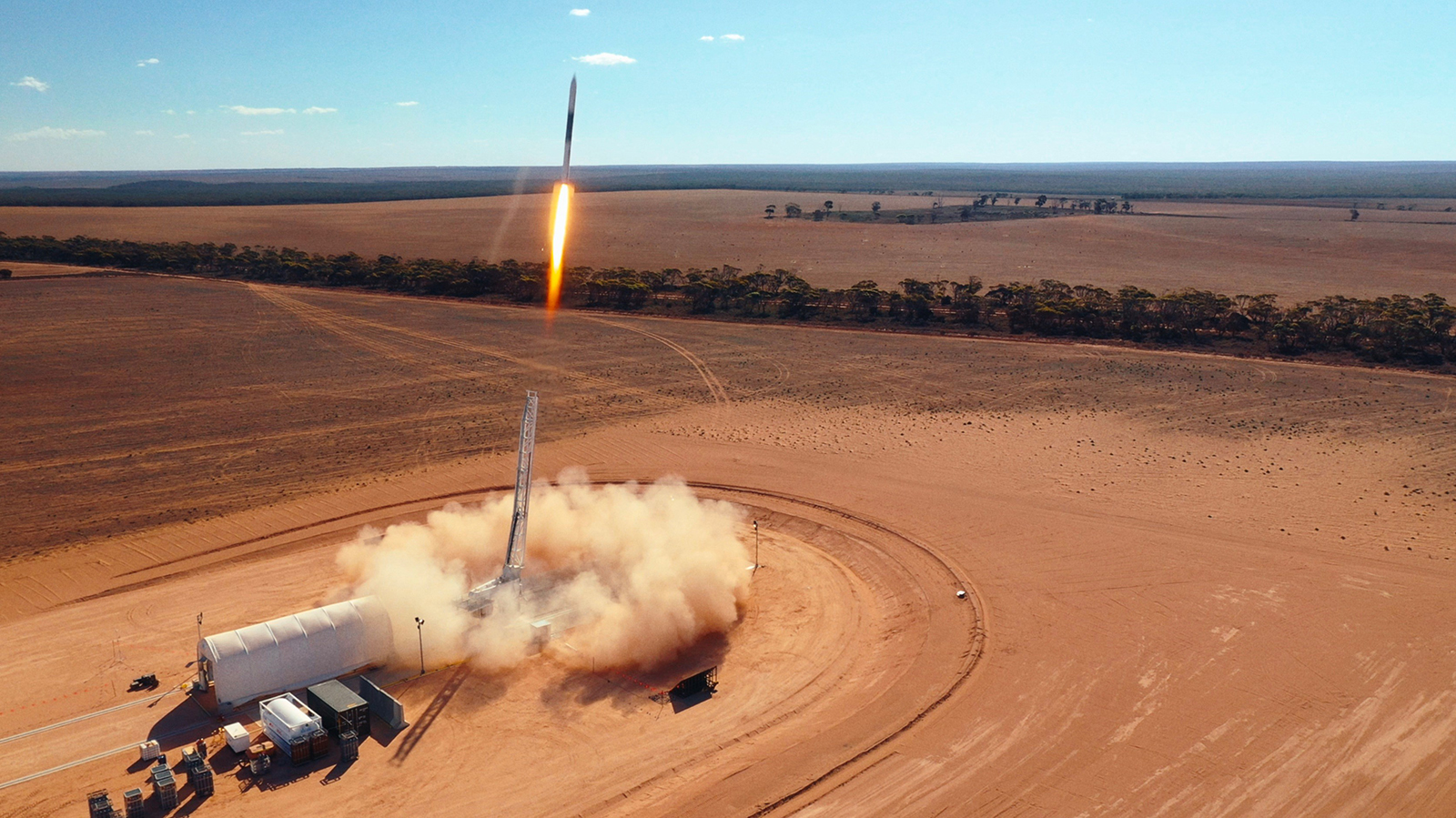Stay Up to Date
Submit your email address to receive the latest industry and Aerospace America news.
The Hybrid Rockets Technical Committee studies techniques applied to the design and testing of rocket motors using hybrid rocket systems.
This year saw progress in hybrid rocketry, with key advancements occurring on multiple continents. Combining the benefits of solid and liquid propellants, hybrids continued to make substantial strides in performance, safety and sustainability. This year’s milestones included orbital launches, engine development and greener propellants.
In March, Gilmour Space Technologies received Australia’s first orbital launch facility license from the Australian Space Agency, clearing the company to launch rockets from its Bowen Orbital Spaceport in North Queensland. In November, the company received the launch permit for its three-stage Eris rocket, the first time Australia has authorized a commercial orbital rocket launch. Toward that first flight, Gilmour in September completed a wet dress rehearsal, taking the launch countdown to 10 seconds before liftoff. All systems at the launch site operated effectively, and the company in early November said it would announce the launch date for the inaugural flight “in the coming weeks.” Should Gilmour succeed, it would position Australia as a key player in the global space industry, with hybrid rockets at the forefront.
Founded in 2018, HyImpulse Technologies has rapidly established itself as a competitive player in the hybrid rocket market, with particular interest in the booming small satellite sector. In May, the German company launched its inaugural SR75 sounding rocket, propelled by the company’s unique green hybrid propulsion. The rocket lifted off from the Koonibba Test Range in Southern Australia on a suborbital trajectory designed to flight-qualify the design HyImpulse’s future orbital launcher, SL1. Scheduled to debut in 2026, SL1 has three stages driven by the company’s HyPLOX75 motors that burn on paraffin and liquid oxygen.
Maine-based bluShift Aerospace this year advanced development of its proprietary MAREVL hybrid engine. In September, bluShift completed a full-duration burn and active throttling of a MAREVL that lasted 60 seconds. This nontoxic hybrid propulsion design has generated considerable interest from the commercial and defense sectors because of bluShift’s focus on carbon-neutral biofuel — versatile enough to power suborbital research missions and small satellite launches, as well as the first stages of larger vehicles. If successful, bluShift could transform the small launch industry by providing responsive satellite replacement.
Researchers at the University of Glasgow made headlines in January with the test firing of the Ouroboros-3 engine at the Machrihanish Airbase MachLab facility. This hybrid autophage engine, or “self-eating” rocket, represents a novel approach to reducing dry mass in launch vehicles. The rocket’s polymer fuselage vaporizes during flight, thus contributing to the total propellant mass flowrate while reducing the rocket’s structural mass. This technology could revolutionize small launch vehicles by providing a highly efficient, cost-effective solution for launching small satellites into low-Earth orbit.
With these commercial and academic milestones, hybrid rockets could help shape the future of space exploration.
Contributors: Sascha Deri, Michelle Gilmour, Patrick Harkness and Mario Kobald
Stay Up to Date
Submit your email address to receive the latest industry and Aerospace America news.




